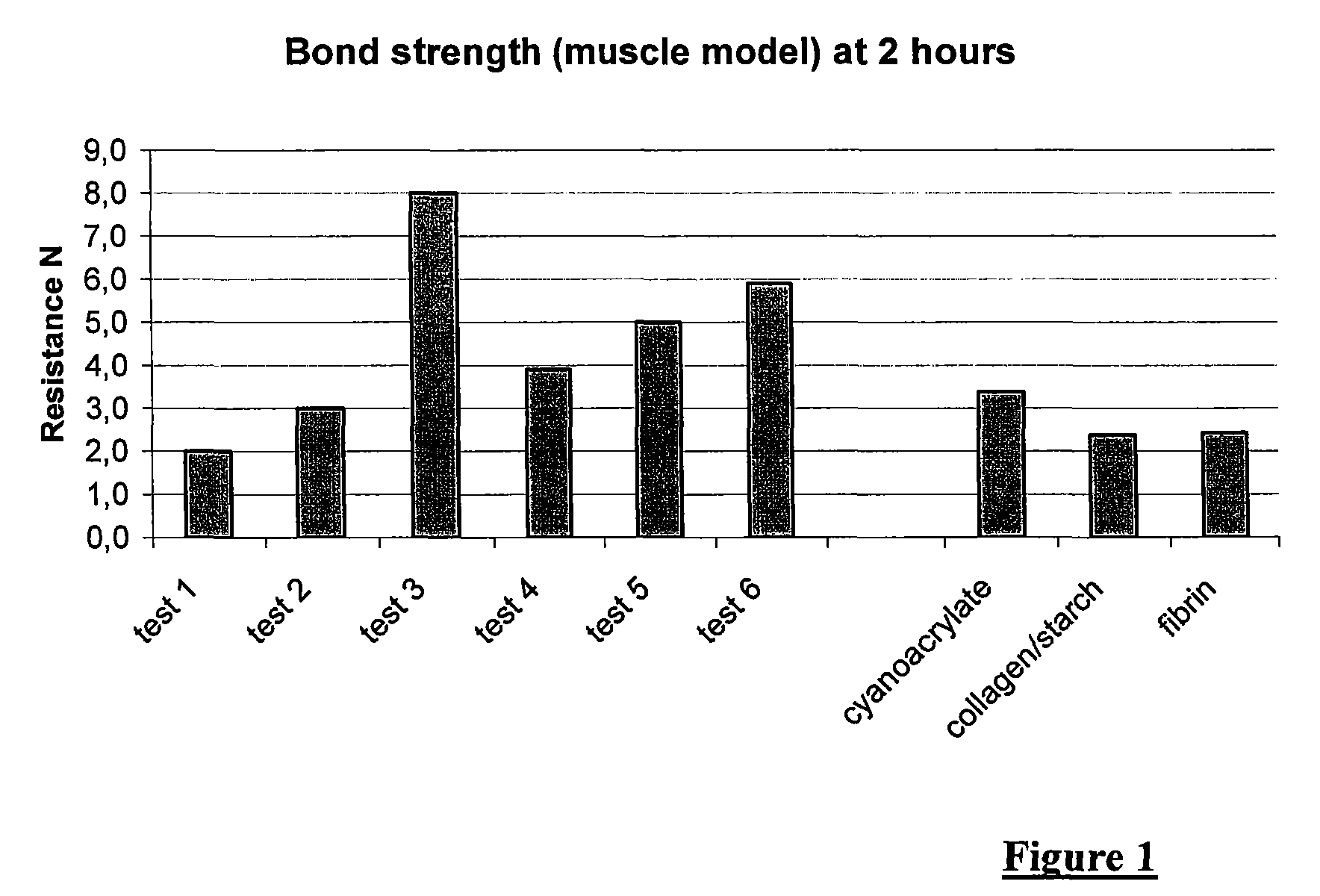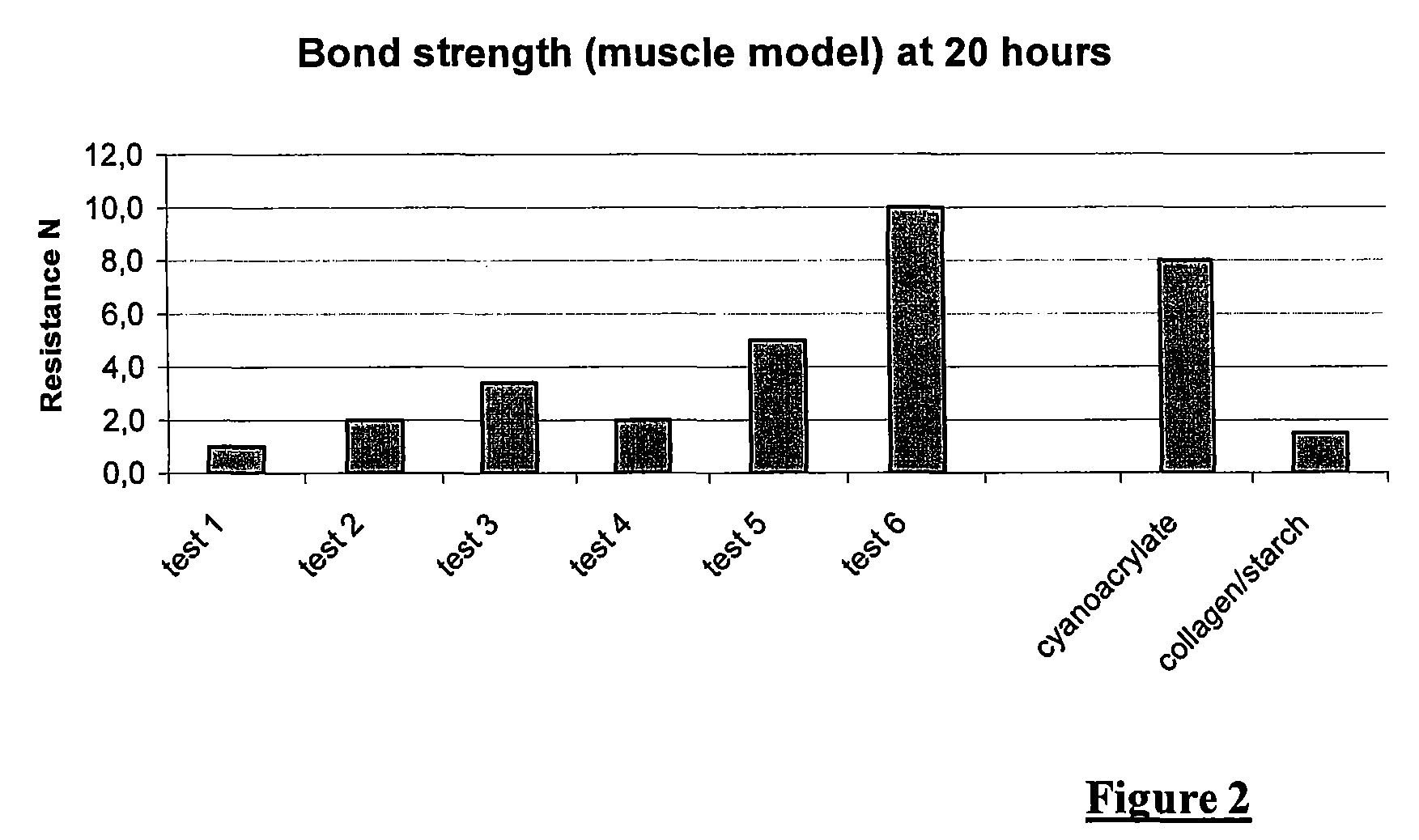Collagen-based lyophilised glue and the use thereof for producing an adhesive prosthesis
a technology of lyophilised glue and collagen, which is applied in the field of collagen-based lyophilised glue and the use thereof in the production of adhesive prostheses, can solve the problems of complex and delicate handling of the required system, collagen as such, and the risk of contamination by viruses or related non-conventional transmissible agents
- Summary
- Abstract
- Description
- Claims
- Application Information
AI Technical Summary
Benefits of technology
Problems solved by technology
Method used
Image
Examples
Embodiment Construction
[0059]On a separate page at the end of the specification, kindly add the Abstract of the Disclosure as presented on the next page:
[0060]Undenatured collagen at 0.7%, extracted from calf's skin, is treated according to the following indications:[0061]sample No. 1: the lyophilised collagen with no other treatment is irradiated with β rays at a dose of 20 kGy.[0062]sample No. 2: a solution of glutaraldehyde at 20 mmol / L is added by mechanical stirring to the collagen in suspension so as to obtain in the end 3,500 ppm of aldehyde functions in relation to the collagen. The mixture obtained is poured into cells and lyophilised for 48 h at a final vacuum of less than 0.5 mbars. The product is then irradiated with β rays at a dose of 20 kGy.[0063]sample No. 3: a solution of oxidized starch at 3% (containing approximately 300 μmole of aldehyde functions / g of solution) is added by mechanical stirring to the collagen at a collagen / starch volume ratio of 20:1. The mixture obtained is poured int...
PUM
| Property | Measurement | Unit |
|---|---|---|
| temperature | aaaaa | aaaaa |
| pH | aaaaa | aaaaa |
| crosslinking | aaaaa | aaaaa |
Abstract
Description
Claims
Application Information
 Login to View More
Login to View More - R&D
- Intellectual Property
- Life Sciences
- Materials
- Tech Scout
- Unparalleled Data Quality
- Higher Quality Content
- 60% Fewer Hallucinations
Browse by: Latest US Patents, China's latest patents, Technical Efficacy Thesaurus, Application Domain, Technology Topic, Popular Technical Reports.
© 2025 PatSnap. All rights reserved.Legal|Privacy policy|Modern Slavery Act Transparency Statement|Sitemap|About US| Contact US: help@patsnap.com



